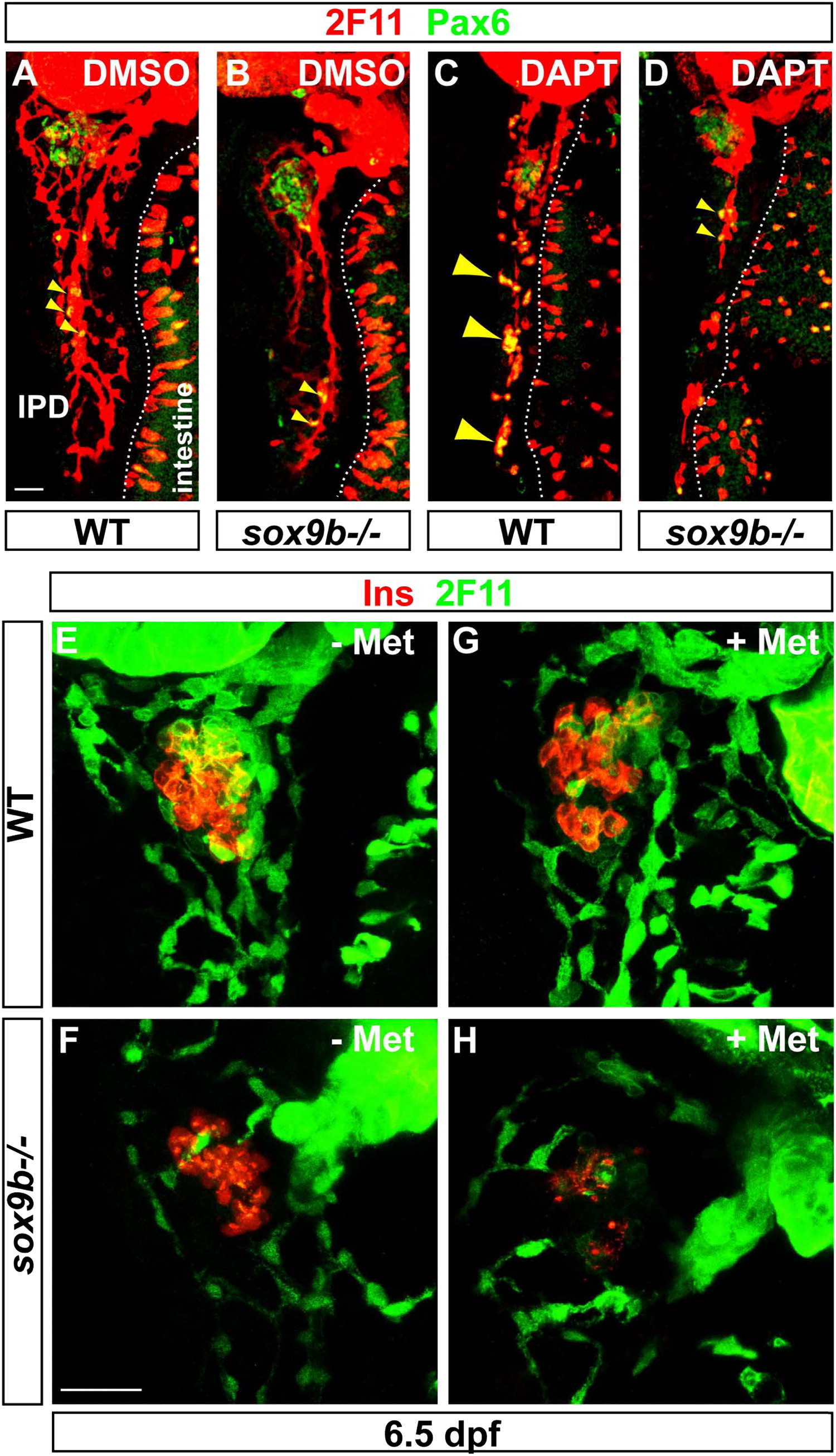Fig. 6
sox9b is required for late endocrine cell formation in the IPD and for islet beta cell recovery upon ablation in larvae. (A?D) Immunodetection at 6 dpf of endocrine cell differentiation (Pax6) along the IPD labelled with 2F11 in wild type (A) and sox9b mutant larvae (B). Larvae were treated with DMSO (A, B) or DAPT (C, D) from 3 to 6 dpf. Secondary isolated endocrine cells are detected (small arrowheads) in wild type and sox9b mutant control larvae. The dotted line demarcates the intestine from the pancreatic region. (C, D) The massive increase in secondary islets resulting from DAPT treatment of wild type larvae (large arrowheads in C) is not observed in sox9b mutants which still display isolated endocrine cells along the IPD (small arrowheads in D). (E?H) Beta cell recovery in Tg(ins:nfsB-mCherry); sox9b larvae upon Metronidazole (Met) mediated ablation. Pancreatic ducts were labelled with 2F11 and beta cells were revealed by Insulin (Ins) immunodetection as mCherry fluorescence was undetectable after the process of immunofluorescence. (E, F) 6.5 dpf Tg(ins:nfsB-mCherry) wild type (E) and sox9b mutant larvae (F) 3 days (80 h) after DMSO treatment from 56 to 80 hpf. (G, H). Tg(ins:nfsB-mCherry) wild type (G) and sox9b mutant (H) larvae 3 days after Met exposure. Scale bar=20 μm.
Reprinted from Developmental Biology, 366(2), Manfroid, I., Ghaye, A., Naye, F., Detry, N., Palm, S., Pan, L., Ma, T.P., Huang, W., Rovira, M., Martial, J.A., Parsons, M.J., Moens, C.B., Voz, M.L., and Peers, B., Zebrafish sox9b is crucial for hepatopancreatic duct development and pancreatic endocrine cell regeneration, 268-278, Copyright (2012) with permission from Elsevier. Full text @ Dev. Biol.

